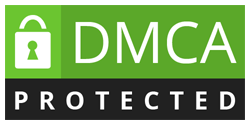answer/reply to post in discussion board
answer/reply to post in discussion board
* use one reference to each of the two answers
* answer/ reply to each post apart (on paragraph each answer)
* USE APA style citation to reply/answer the following two posts
(Post 1)
HICS is an incident management system used in aiding healthcare organizations in improving how they plan, respond and recover from disasters or unplanned events. A difficult that a person can encounter in operating HICS is functionality (Abbasi et al., 2017). The major causes of this difficulty are credit limit, and lack of national package from the ministry of health. Moreover, this system has been identified to be incompatible with the structure of an organization, making the organization to face a quite number of challenges such as high costs of implementation, lack of staff motivation, and lack of common language among other challenges (Shooshtari et al., 2017).
Training needs to be enhanced throughout the organization. This will depend on the overall department of services within the organization. Based on my speculation, I think the Emergency Preparedness Team should be trained on how it will carry out its operations during the emergency period. The Emergency Preparedness Team is comprised of emergency department, response committee, and security officers (Shooshtari et al., 2017) and other personnel. I think different staff should receive different levels of training as they will not have to focus on one area during an emergency.
References
Abbasi, S., Shooshtari, S., & Tofighi, S. (2017). Challenges of Hospital Incident Command System (HICS) from Expertsâ Perspectives: A Qualitative Research. Indian Journal of Science and Technology, 10(28).
Shooshtari, S., Tofighi, S., & Abbasi, S. (2017). Benefits, barriers, and limitations on the use of Hospital Incident Command System. Journal of research in medical sciences: the official journal of Isfahan University of Medical Sciences, 22.
——————————————–
Post 2
Although the hospital incidence command system has existed for a long time, it has been hard to put it into operation. Some organizations have used it as required, while others have ignored it (Jensen & Waugh, 2014). The primary challenge associated with the implementation of HNIC is that there is no uniformity on how the system is used in various organizations (Jensen & Waugh, 2014). The main solution to this problem is that the government should set up a guideline on how the HICS should be applied. It also needs to pass a policy where all the relevant organizations are required by the law to adhere to the set guidelines. This will help to ensure that health facilities adopt the hospital incidence command system according to the indented purpose for its introduction.
There are different perceptions among hospitals on who should be trained in HICS. The arguments are based on who, among the hospital staff, is essential during a disaster. According to authority agencies in the US, all the employees in a health facility should be given adequate training on disaster management. However, this is not what happens because most of the hospitals offer training to the employees in the emergency department (Reilly & Markenson, 2009). Other workers in the health facility are regarded not to be essential in disaster management. Although all the staff in a hospital should be offered training on HICS, they should receive it at different levels. The people in the emergency department need to be given specialized training because in most cases they are charged with the direct responsibility of dealing with the unexpected matters (Reilly & Markenson, 2009). However, other staff in the hospital should also be equipped with some skills which they can use to assist the employees in the emergency department.
References
Jensen, J., & Waugh Jr, W. L. (2014). The U nited S tates’ Experience with the Incident Command System: What We Think We Know and What We Need to Know More About. Journal of Contingencies and Crisis Management, 22(1), 5-17.
Reilly, M., & Markenson, D. S. (2009). Education and training of hospital workers: who are essential personnel during a disaster?. Prehospital and disaster medicine, 24(3), 239-245.
"Looking for a Similar Assignment? Get Expert Help at an Amazing Discount!"


